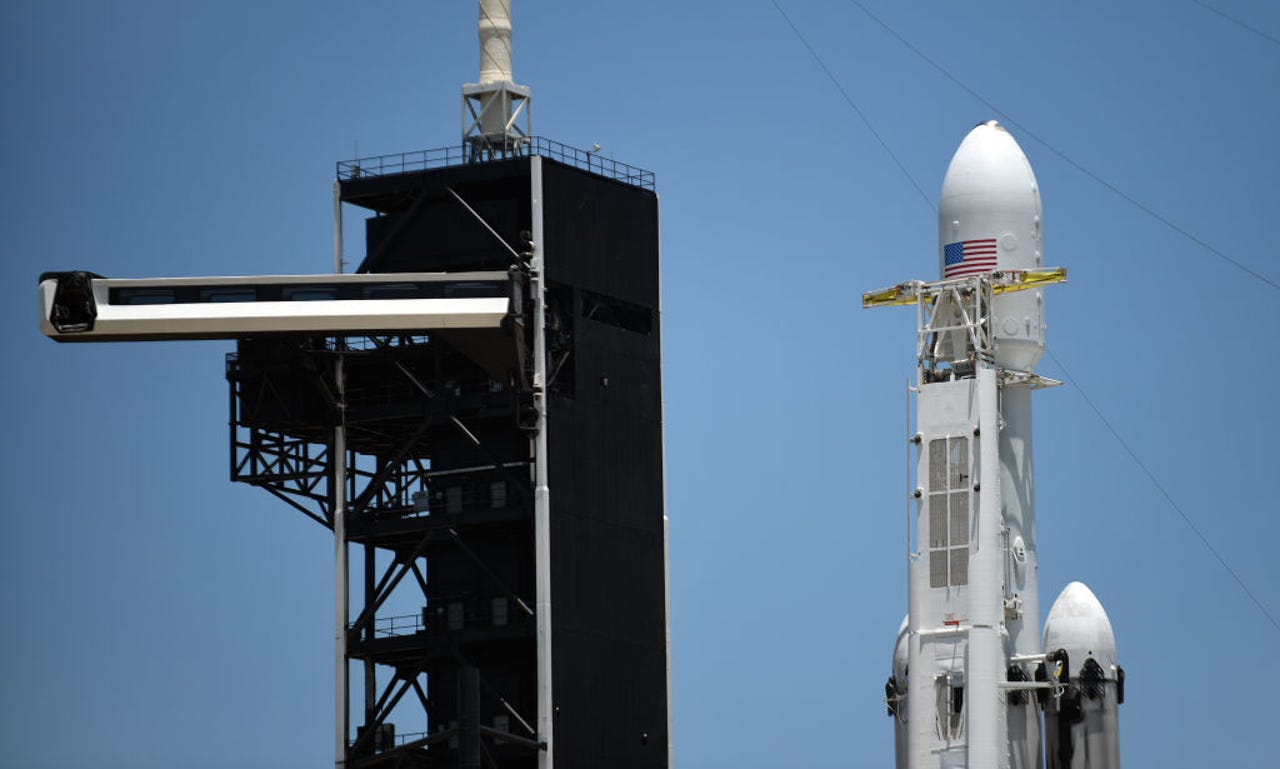
































A Falcon Heavy rocket being prepared for a previous launch.
Image: Getty Images/NurPhotoFalcon Heavy is the world's biggest operational rocket and has just set off for space once again after a three-year hiatus.
The launch is part of the USSF-44 classified mission for the United States Space Force that will take its payload to a geosynchronous orbit (GEO) at about 22,000 miles (35,000 km) from Earth -much farther away from Earth than SpaceX's Starink satellites, which orbit in low-Earth orbit (LEO) at 340 miles (550 km) from Earth.
Falcon Heavy was first launched in 2018 and since then SpaceX's focus has shifted to Starship, the yet-to-be-tested rocket that SpaceX, Tesla, and now Twitter boss Elon Musk hopes will carry humans to Mars one day.
Starship could do what NASA's Artemis missions aspire to, with human-led missions to the Moon and Mars at some point after 2024. The chief contractor for the Artemis rockets' core stage is Boeing.
Also: What is Artemis? Everything you need to know about NASA's new moon mission
The original plan was set to launch Falcon Heavy on Halloween but it was delayed after a test on Thursday. Falcon Heavy is carrying two payloads, including a larger, unconfirmed satellite and a micro-satellite named TETRA-1, US Space Force said in a statement on one of its YouTube Channels.
"TETRA-1 is the first in a series of prototype GEO satellites launched by the US military, which will test systems procedures for future satellites."
Via ArsTechnica, the US Space Force offered a few more details. It said its Long Duration Propulsive EELV Secondary Payload Adapter (LDPE ESPA)-2 and Shepherd Demonstration "will carry a variety of payloads that will promote and accelerate the advancement of space technology for the benefit of future Programs of Record."
Falcon Heavy is a modified version of Falcon 9's first stage, with two boosters versus Falcon 9's single-core stage. It has a likely lifespan of another five years.
The US Space Force planned to launch this mission in December 2020. Falcon Heavy has 10 more flights scheduled between now and 2024, consisting of five for NASA, three for US Space Forces, and two for commercial satellite operators.
 Tags quentes :
Inovação
Espaço
Tags quentes :
Inovação
Espaço